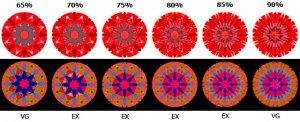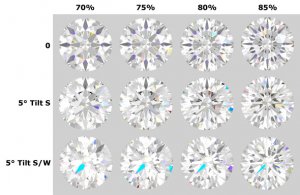I know there has been several threads in the past but there seems to be some contradictory info in them. In a well cut RB diamond how does a lgf of 80+ affect the face up performance? Some have said it only increases brilliance in direct/spot lighting and suffers in low/diffuse lighting while others suggest it is more brilliant in diffuse lighting and more pin fire flash in direct lighting. I understand that as the lower girdles get longer the pavilions get narrower thus the arrows narrow in the face up position and contrast changes. I realize the hearts with develop clefts but how does all this affect what we see in the face up postion with different lighting conditions? While I''m at it I would love to hear what affect longer stars(say around 58%) have on fire/brilliance etc. As always everyones help is and has been greatly appreciated.
Andy
Andy











300x240.png)